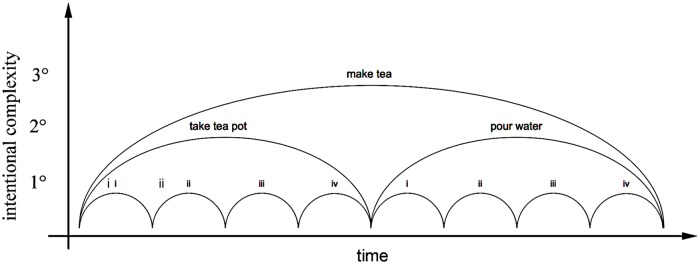FIGURE 1.

Hierarchical organization of units of intentional sensori-motor action: (1°) individual ‘action units’ toward immediate goals; (2°) proximal projects that structure and coordinate elementary action units; and (3°) projects of projects. For example, the distal tertiary intention to ‘make tea’ is accomplished by a sequence of secondary levels of intention; to ‘take tea pot,’ ‘pour water,’ each composed of a sequence of more proximal sensorimotor actions: (i) reach and (ii) grasp the tea pot, (iii) place into position, and (iv) release; (i) reach and (ii) grasp the kettle, and (iii) pour water into the tea pot before (iv) returning the kettle to its resting position. Overlapping projects are possible with use of two limbs or others effectors, with simultaneous action coordinated within a single body for a single practical purpose. Such unitary and embedded organization of practical skill enables a rich repertoire of possible projects. See also Delafield-Butt and Gangopadhyay (2013).
